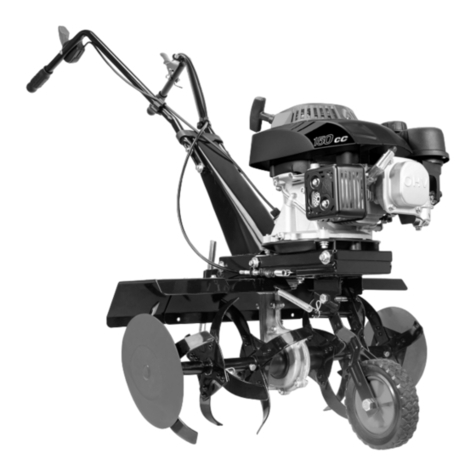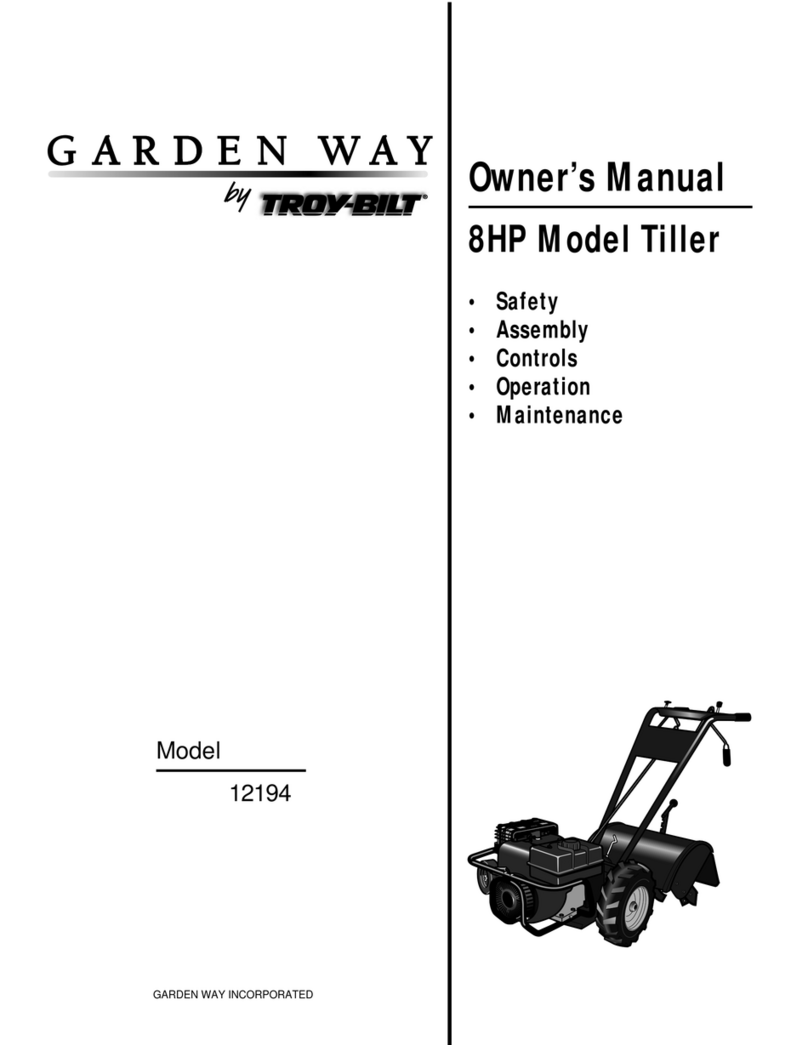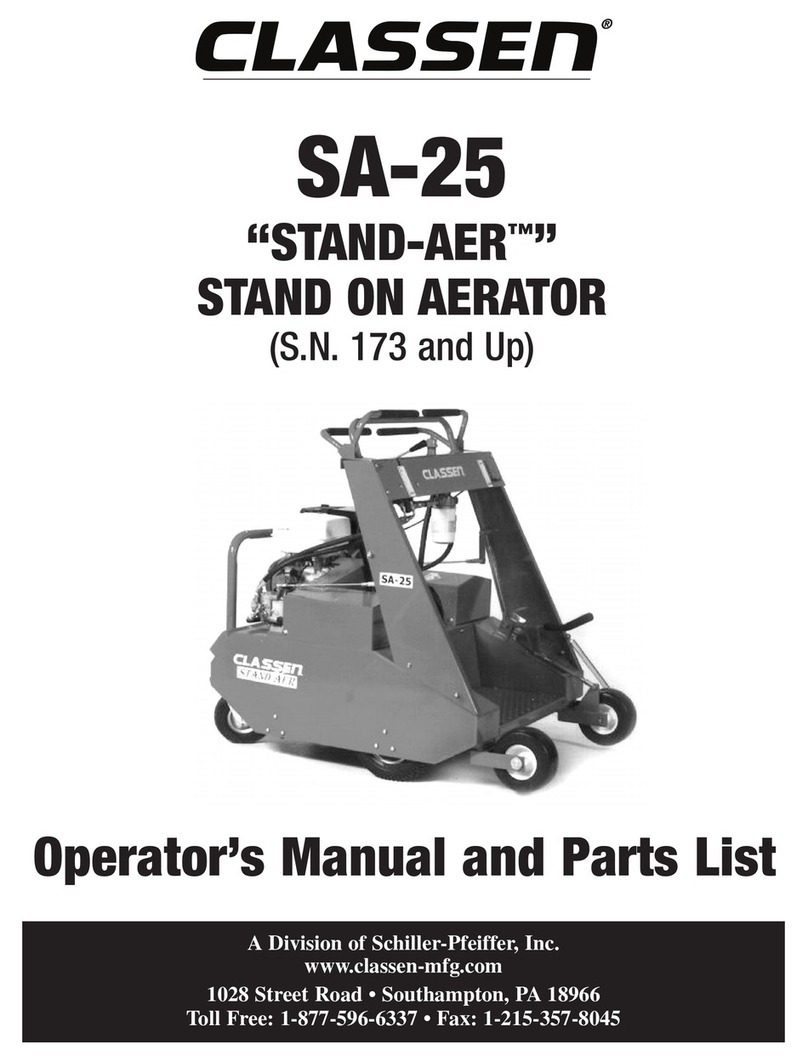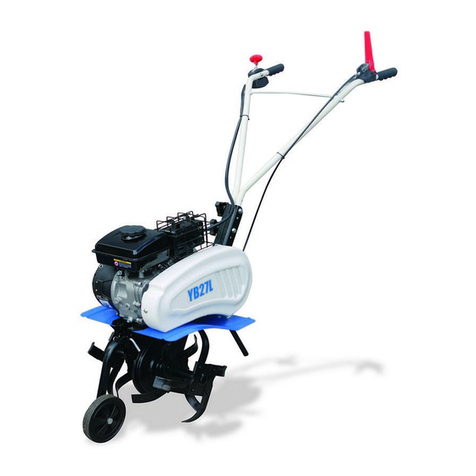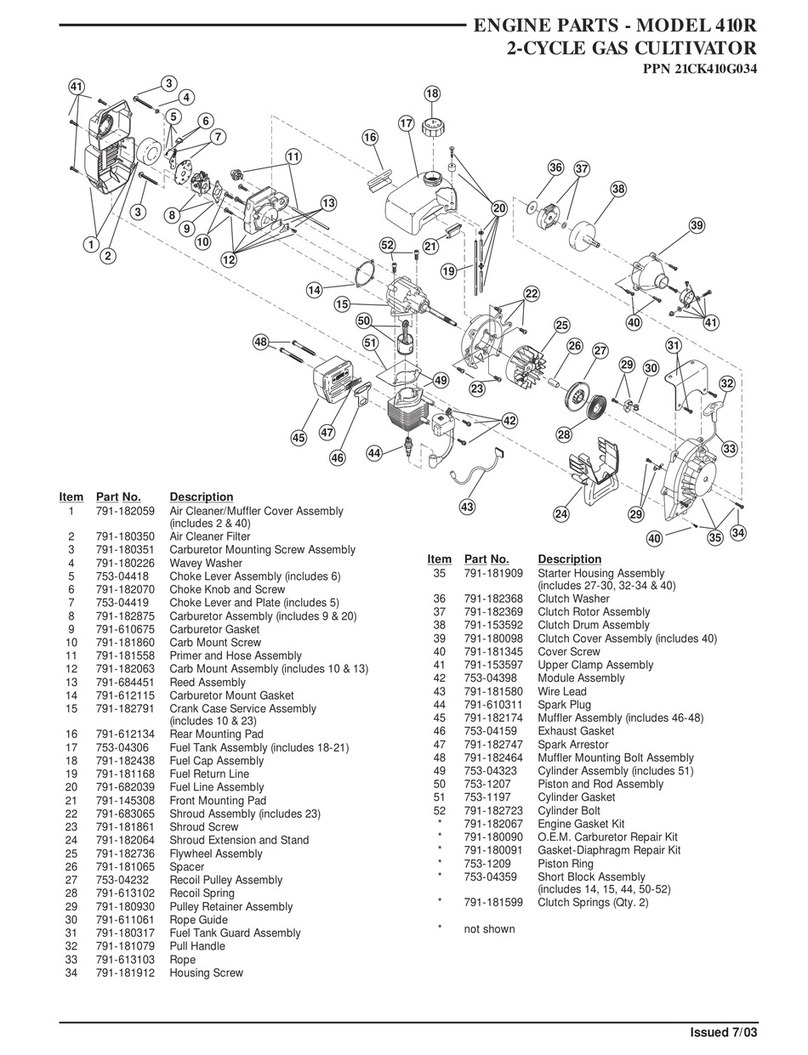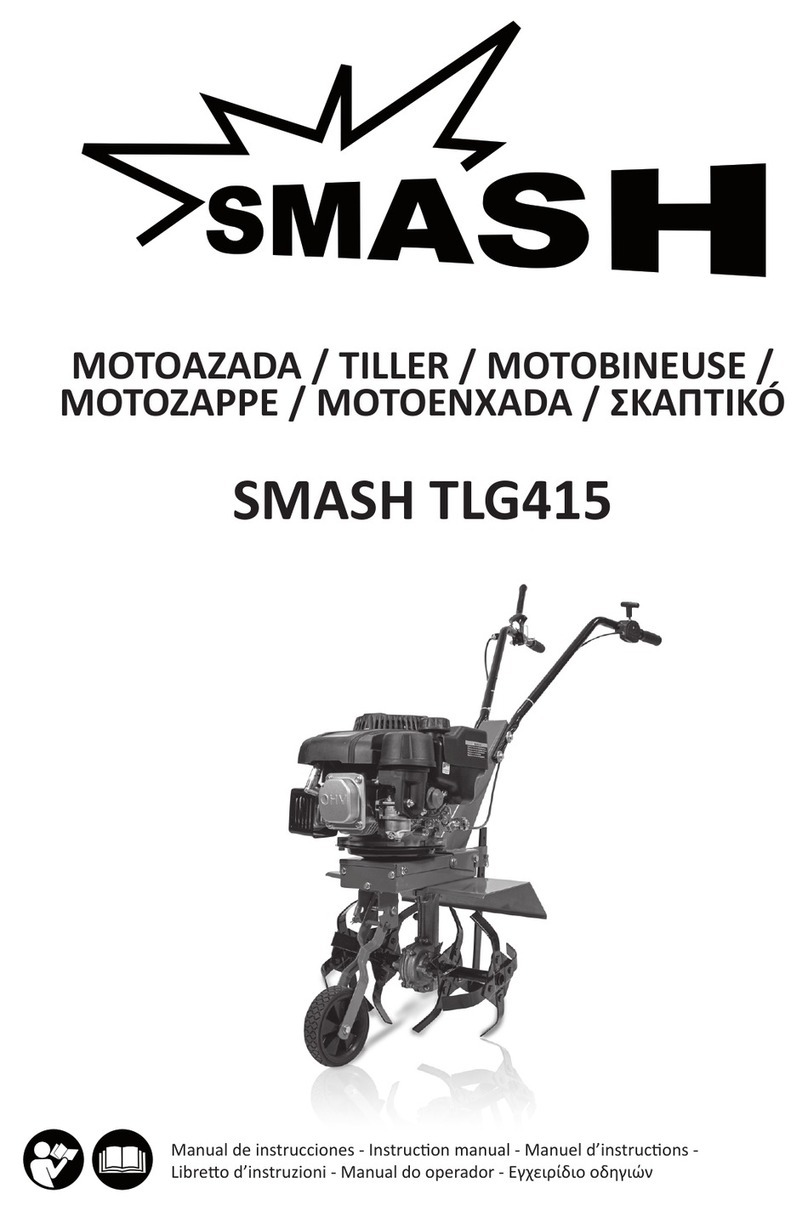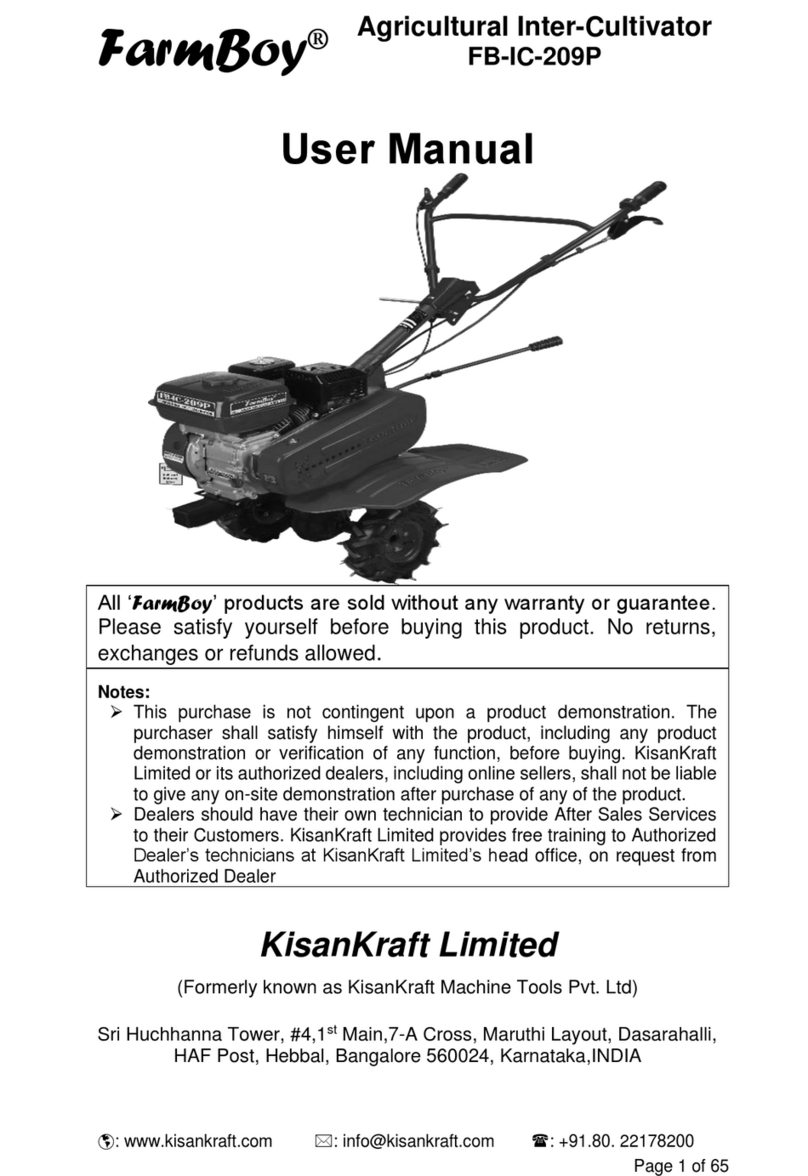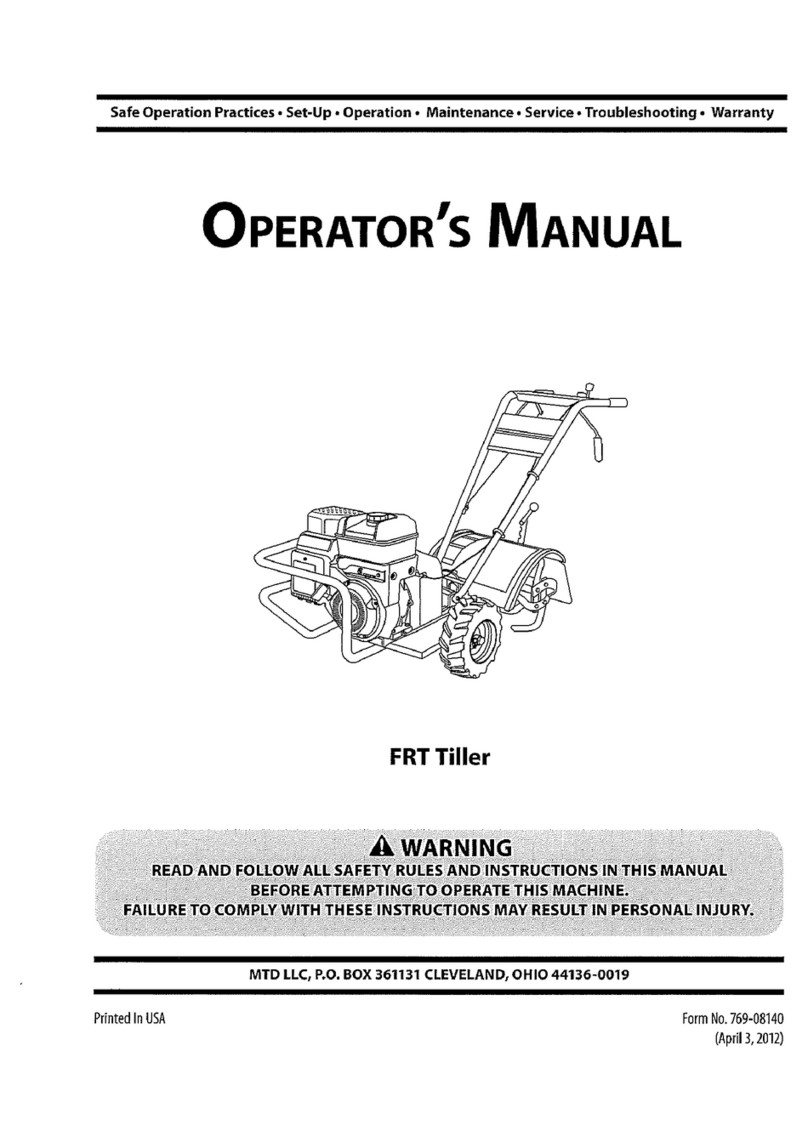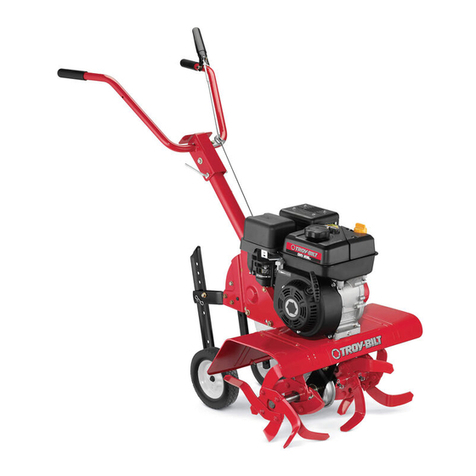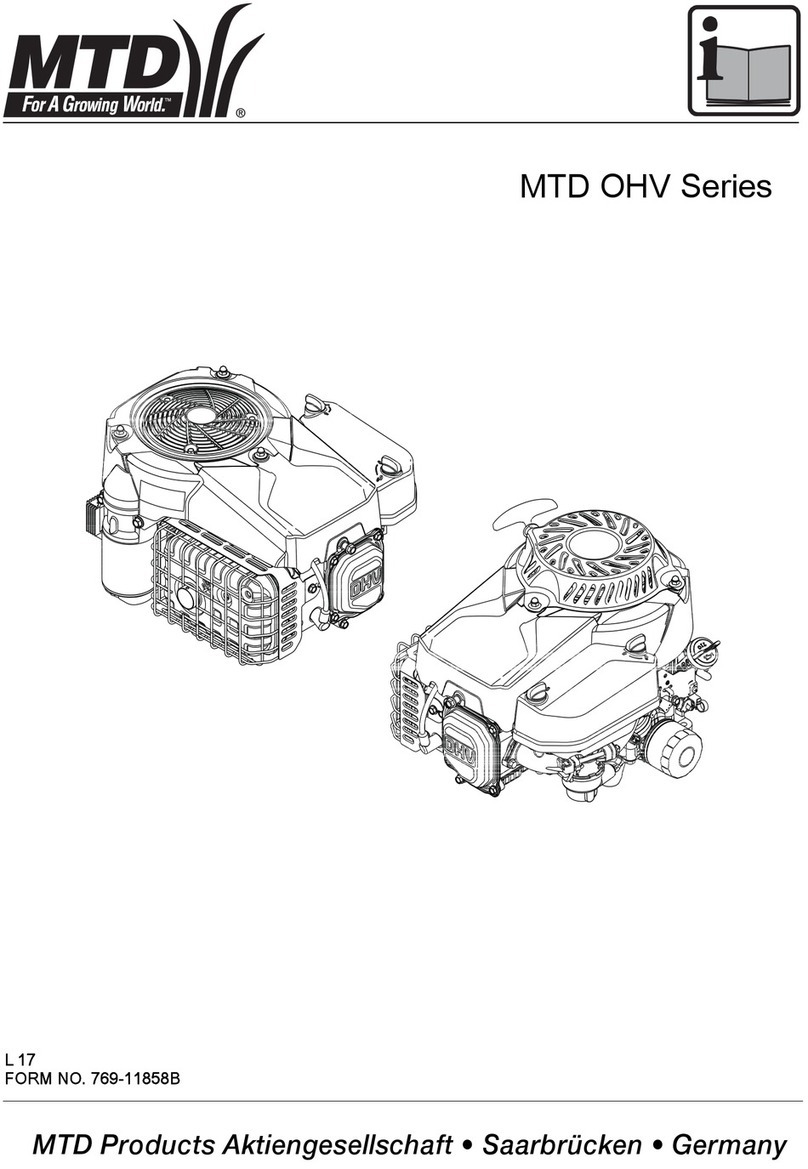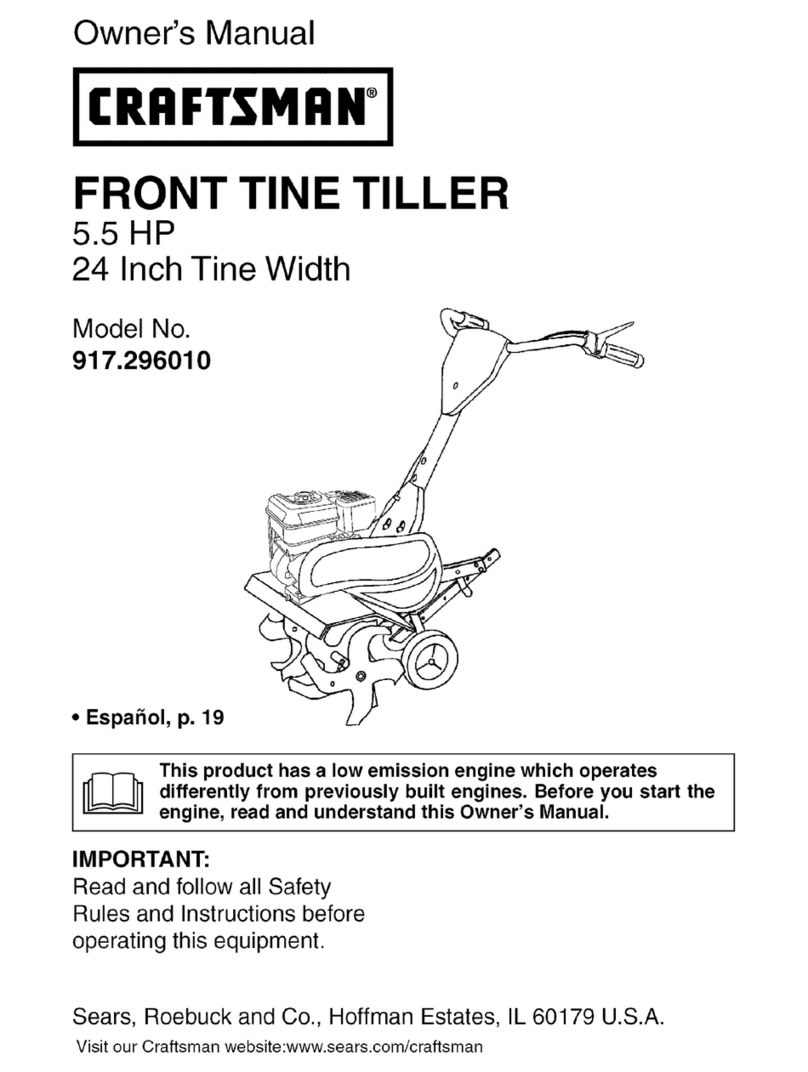
3-2 Operating
the
tiller
(1) Shift the change lever
to
the position
mostly suitable to the scheduled work by
keeping the main clutch disengaged.
(Fig.4)
(2) Opening
the
throttle
lever, increasing
the
engine revolution and gradually engaging
the main clutch lever,
then
the
tiller
be"
gins to move.
3-3 Stopping
the
engine and
the
tiller
(1)
Lower the engine running speed by re-
turning the main clutch lever to
the
"disengage" position.
(2}
Shift the change lever
to
the
"neutral"
position.
(3) Idle
the
engine for
2""'-3
minutes at alow
speed. Stopping
the
engine
at
ahigh
speed may cause adifficulty for next
starting.
(4) When stopping
the
engine, set
the
stop
switch
to
the
OFF
position (Fig. 5).
(5) Set
the
fuel cock lever to the
"close"
position finally.
3-4 Security
memo
Please adhere to
the
followings
in
order
to
prevent against hazardous events before they
occur,
as
well
as
to
increase efficiency securely
and
comfortably:
(
1)
The change lever should
be
shifted after
the
main clutch
is
exactly disengaged.
(
2}
When starting
the
engine, always
put
the
main clutch level'
to
the
"disengage"
position.
(
3}
Replacement
of
wheels or operational
devices should be
done
after
the
engine
is
stopped
without
fail.
(
4)
Fuel should
be
refilled after
the
engine
is
stopped.
be careful
not
to
spill
any
of fuel
out,
particularly in case of
the
engine
in
being warmed up.
(
5}
In
case of using
the
rotary,
replacement
of tiller blades, or grass or
straw
tangled
with the tilling shaft should
be
done
without
fail after the rotary clutch lever
is
put
into
the
"disengage" position and
for asake of security
the
engine
is
stopped.
(
6)
All
covers and
the
likes should be placed
at their respectively specified locations.
(
7)
When conducting inspection or mainte-
nance
work,
or being
apart
from
the
tiller, the engine should be
stopped
and
the machine
body
should
be
held stably.
(
8)
Cleaning of
the
till~r
should be
done
after
the
movement
of
every
part
is
stopped.
(
9)
Never access
cloth,
hands
or
legs
to
the
revolving portions.
(10) Never make
other
people access
to
your
tiller.
(11) Make sure
that
there
is
no people around
the
tiller when
the
engine
starts
running,
or prior
to
the
operation.
(12)
Be
careful when getting
your
tiller
in
and
out
of
the
field,
or
crossing over
the
ridges.
(13)
Follow
the
traffic rules
in
case of
running on public roads.
(14)
If
the
operational machine
is
not
mount-
ed on
the
power take-off
shaft,
put
the
specified
shaft
cap
on
without
fail.
Levier de
starter
Choke
mark
Repere
de
starter
(Fig.
3)
Change lever
Levier
de
changement
de
vitesses
Stop
switch
Contacteur
d'arnH
(Fig.
5)
Handle
Guidon
ment.
oTirer
la
corde
en ligne droite.
3-2
Fonctionnement
du
cultivateur
(1) Placer
Ie
levier
de
changement
de vitesse
a
la
position requise
pour
Ie
travail avec
Ie
elabot
principal debraVe. (Fig. 4)
(2)
Tourner
la
manette
des gaz progressive-
ment
pour
augmenter
la
vitesse
du
moteur;
embrayet'
Ie
clabot
principal
doucement
et
la
machine
commence
alors a
se
de-
placer.
3-3
AmH
du
moteur
et
du
cultivateur
(1) Debrayer
Ie
clabot
principal
et
diminuer
vitesse
du
moteur.
(2) Placer
Ie
levier
de
changement
de
vitesse
au
point
mort.
(3) Faire
fonctionner
Ie
moteur
pendant
quelques minutes afaible vitesse.
L'arret
immediat
apres une
marche
avitesse
elevee
peut
rendre difficile
Ie
demarrage
suivant.
(4) Pour
arreter
Ie
moteur,
placer
Ie
contact-
eur
d'arret
a
la
position
OFF
(Fig. 5).
(5)
En
dernier lieu, fermer
Ie
robinet
a
carburant.
3-4 Mesures
de
securite
Observer les
precautions
suivantes
pour
utilislV-
la
machine avec une rentabilite
et
une secur((",.
accrues.
(
1)
Le
levier
de
changement
de
vitesse
doit
etre actionne apres
que
Ie
clabot
principal
est bien bebraye.
(
2)
Lors
du
demarrage,
toujours
placer
Ie
levier de
clabot
principal en position
"debravage".
(
3)
Lors
du
remplacement
des roues ou des
accessoires,
toujours
arreter
Ie
moteur
au prealable.
(
4)
Pour
ajouter
du
carburant
dans
Ie
reservoir,
toujours
arreter
Ie
moteur
et
veiller ane pas faire
deborder.
Etre
particulierement
prudent
lorsque
Ie
moteur
est encore
chaud.
(
5)
Lorsque I'on emploie
la
fraise,
Ie
rem-
placement des lames ou
Ie
nettoyage
de
I'herbe ou de
la
paille accrochee aux
lames ne peuvent se faire
qu'apres
avoir
place
Ie
levier
de
fraise en position
de
"debrayage"
et
pour
toute
securite,
apres avoir arrete
Ie
moteur.
(6)
Tous
les couvercles
et
protections
vent se trouver aleur place respective.
(
7)
Lors
de
I'inspection ou
du
graissage
ou
lorsque
l'on
s'ecarte
du
cultivateur,
arr/Her
Ie
moteur
et
faire en sorte
que
la
machine ne bouge pas.
(
8)
Le
nettovage
des differentes pieces
doit
commencer
apres
que
toutes
les pieces
sont
aI'arret.
(
9)
Ne pas
approcher
les vetements,
la
main
ou
Ie
pied des parties rotatives.
(10) Ne pas laisser
d'autres
personnes mana-
euvrer votre cultivateur.
(11) S'assurer
que
personne ne se trouve it
proximite
de
votre
cultivateur lors
de
la
mise en
route
et
avant I'operation.
(12) Faire
attention
lors de I'entree
ou
de
la
sortie
du
champ
et
lars
du
passage
de
bordures.
(13) Se
conformer
au
code
de
la
route
si
l'on
conduit
sur des
routes
publiques.
(14)
Si
la
machine n'est pas
montee
sur l'axe
de transmission, placer sans
faute
Ie
chapeau
d'axe
approprie.
•
